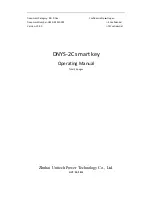
General repair instructions
BOMAG
17
008 911 63
1.3
Air conditioning system
CFC - halon prohibition
The CFC - halon prohibition from May 06, 1991 regu-
lates the withdrawal from the use of CFC and the han-
dling of these refrigerants.
Contents:
Since 1995 CFC (R12) is no longer permitted for use
in new systems.
In operation, during maintenance and repair work and
when taking refrigeration systems our of service it is
not permitted to let refrigerant escape into the atmos-
phere, which would contradict the current status of
technology.
Work on refrigeration systems must only be carried
out by persons with well founded knowledge about
such systems and who have the necessary technical
equipment available.
The use of refrigerant must be documented.
Old systems should be converted to refrigerants
harmless to ozone (refrigerant substitutes).
For this reason the Federal Environmental Agency at
the end of 1995 published suitable replacement refrig-
erants for R 12. As a consequence old systems must
no longer be filled with R12. As soon as such a system
is opened for service, the system must be converted
to a suitable replacement or service refrigerant. Old
systems may still be used, as long as they are leak
tight. R 134a was nominated as replacement for R 12.
Inside the European Union the "EU-Directive 2037/
2000 on substances causing decomposition of the
ozone layer" regulates the production, use and avail-
ability of CFC and H-CFC.
●
In case of a repair on the refrigeration system you
should first evacuate the air conditioning system for
at least 45 minutes to remove any moisture from the
system, before you start to refill. Moisture bonded in
the compressor oil / refrigeration oil (PAG oil) can
only be removed from the system by changing the
oil.
●
During repair work on refrigerant lines and compo-
nents, these must be kept closed as far as possible,
in order to prevent the invasion of air, moisture and
dirt, because the operational reliability of the system
can only be assured if all components in the refrig-
erant circuit are clean and dry from inside.
●
Make sure that no dirt or foreign parts can enter into
the compressor or the air conditioning system. The
area around the refrigerant hoses should be
cleaned with a gasoline free solvent.
●
All parts to be reused should be cleaned with a
gasoline free solvent and blow-dried with clean
compressed air or dried with a lint-free cloth.
●
Before opening all components should have
warmed up to ambient temperature, to avoid that
damp air is drawn into the component by the differ-
ence in temperatures.
●
Damaged or leaking parts of the air conditioning
must not be repaired by welding or soldering, but
must generally be replaced.
●
Do not fill up refrigerant, but extract existing refrig-
erant and refill the system.
●
Different types of refrigerant must not be mixed.
Only the refrigerant specified for the corresponding
air conditioning system must be used.
●
Refrigerant circuits with refrigerant type R134a
must only be operated with the compressor oil / re-
frigeration oil approved for the compressor.
●
Used compressor oil / refrigeration oil must be dis-
posed of as hazardous waste.
●
Due to its chemical properties compressor oil / re-
frigeration oil must never be disposed of together
with engine or transmission oil.
●
Compressor oil / refrigeration oil is highly hydro-
scopic. Oil cans must strictly be kept closed until
use. Oil rests should not be used, if the can had
been opened over a longer period of time.
●
All O-rings as well as pipe and hose fittings must be
oiled with compressor/refrigeration oil be-
foreiassembly.
●
When replacing a heat exchanger, e.g. evaporator
or condenser, any compressor oil / refrigeration oil
lost by exchanging the components, must be re-
placed with fresh oil.
●
A too high compressor oil / refrigeration oil level ad-
versely affects the cooling performance and a too
low oil level has a negative effect on the lifetime of
the compressor.
●
If a air conditioning unit needs to be opened, the
dryer must be replaced in any case.
●
Always use new O-rings when reassembling the
unit.
●
Always use two spanners when connecting pipes or
hoses, to prevent the pipe end from being damaged
.
●
Tighten screw fittings with the specified torque.
●
Check the connections of pipes, fittings or compo-
nents thoroughly; do not use if damaged.
●
Do not leave the refrigerant circuit unnecessarily
open to the atmosphere. Do not attempt to repair
bent or burst pipes.
●
Compressor valves must only be opened after the
system has been properly sealed.
●
The use of leak detection colouring matter is not
permitted, because its chemical composition is un-
known and its effect on compressor oil and rubber
elements is not predictable. The use of leak detec-





































